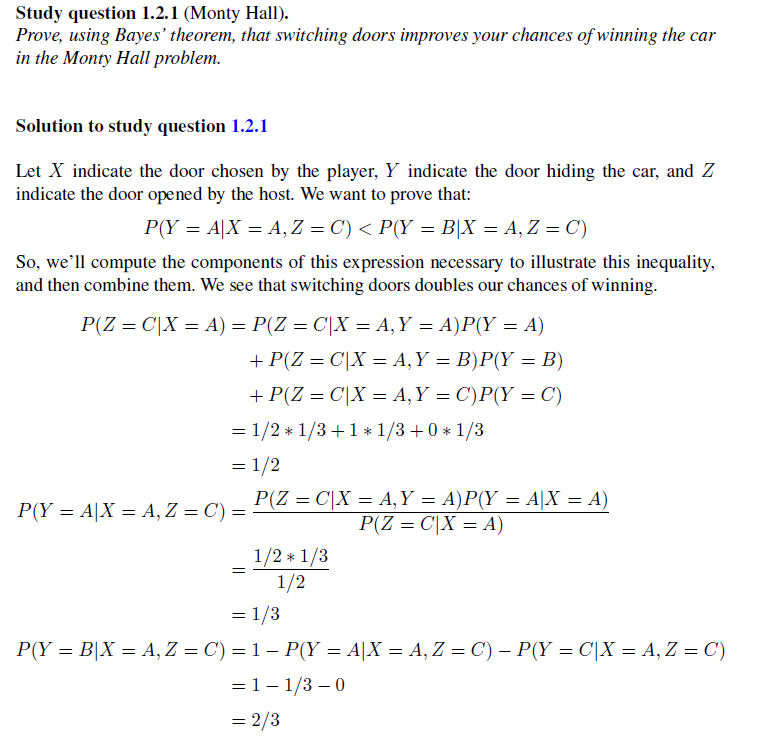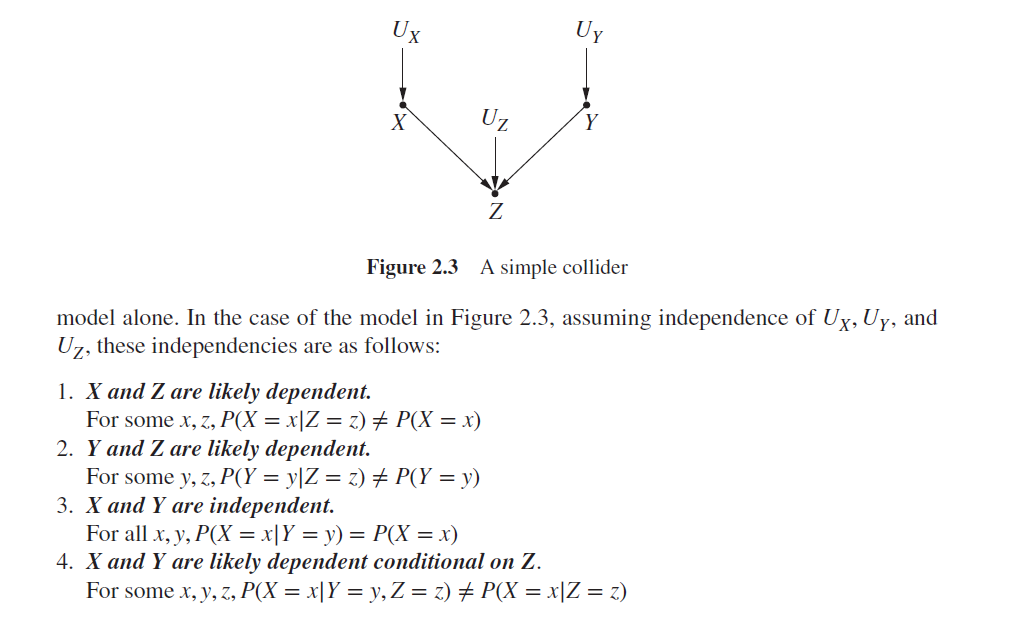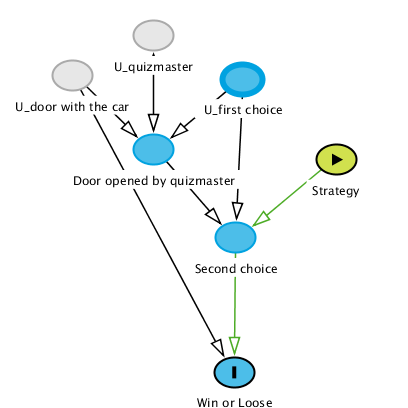I discovered that this story is used also in: CAUSAL INFERENCE IN STATISTICS A Primer - Pearl Glymour and Jewell (2016). Monty Hall problem can be addressed in both ways: purely statistical and causal one.
Authors deal with Monty Hall problem with standard conditioning and related Bayes rule. Indeed at pag 14 it is said that:
Another informative example of Bayes’ rule in action is the Monty Hall
problem, a classic brain teaser in statistics. In the problem, you are
a contestant on a game show, hosted by Monty Hall. Monty shows you
three doors—A, B, and C—behind one and only one of which is a new car.
(The other two doors have goats.) If you guess correctly, the car is
yours; otherwise, you get a goat. You guess A at random. Monty, who is
forbidden from revealing where the car is, then opens Door C, which,
of course, has a goat behind it. He tells you that you can now switch
to Door B, or stick with Door A. Whichever you pick, you’ll get what’s
behind it. Are you better off opening Door A, or switching to Door B?
Switching is better
We can prove this surprising fact using Bayes’ rule. Here we have
three variables: X, the door chosen by the player; Y, the door behind
which the car is hidden; and Z, the door which the host opens. X, Y,
and Z can all take the values A, B, or C.
In the text the solution is not outlined but I find it in this webpage http://bayes.cs.ucla.edu/PRIMER/

However them note also that (pag 15):
The reader may find it instructive to note that the explanation above
is laden with counterfactual terminology; for example, “He could have
opened,” “because he was forced,” “He was about to open.” Indeed, what
makes the Monty Hall example unique among probability puzzles is its
critical dependence on the process that generated the data. It shows
that our beliefs should depend not merely on the facts observed but
also on the process that led to those facts. In particular, the
information that the car is not behind Door C, in itself, is not
sufficient to describe the problem; to figure out the probabilities
involved, we must also know what options were available to the host
before opening Door C.
Indeed later two different study questions are posed:
Study question 1.3.5 (Monty Hall) Prove, using Bayes’ theorem, that
switching doors improves your chances of winning the car in the Monty
Hall problem.
Study question 1.5.4 Define the structural model that corresponds to
the Monty Hall problem, and use it to describe the joint distribution
of all variables.
The question 1.3.5 is solved above (even if the exercise number reported in the solution is erroneous)
More ahead (pag 41-43) the solution for the question 1.5.4 is outlined too

“ … Another example of colliders in action—one that may serve to
further illuminate the difficulty that such configurations can present
to statisticians—is the Monty Hall Problem, which we first encountered
in Section 1.3. At its heart, the Monty Hall Problem reflects the
presence of a collider. Your initial choice of door is one parent
node; the door behind which the car is placed is the other parent
node; and the door Monty opens to reveal a goat is the collision node,
causally affected by both the other two variables. The causation here
is clear: If you choose Door A, and if Door A has a goat behind it,
Monty is forced to open whichever of the remaining doors that has a
goat behind it. Your initial choice and the location of the car are
independent; that’s why you initially have a 1/3 chance of choosing
the door with the car behind it. However, as with the two independent
coins, conditional on Monty’s choice of door, your initial choice and
the placement of the prizes are dependent. Though the car may only be
behind Door B in 1/3 of cases, it will be behind Door B in 2/3 of
cases in which you choose Door A and Monty opened Door C.”
The figure 2.3 represent the DAG for the basic collider example; two independent causes with a common effect.
Now, the terms $P(Z=C|X=A,Y=y)$ reveals the dependencies, that are induced by the rules of the game. Indeed the three probabilities are different: $1/2$ if $Y=A$; $1$ if $Y=B$, $0$ if $Y=C$). The host cannot open the door chosen by the player, and the last two probabilities are true because the host cannot open the door that hides the car too; so his chosen is forced. The first probability is true because if $Y=A$ the host choice remain random ($C$ or $B$).
The same fact is expressed also in the term $P(Y=C|X=A,Z=C)=0$, that justify the advantage for the player to switch from the door $A$ to door $B$.
Therefore, about questions:
However this fact seems me in contrast with the main argument of
causal inference. It is so? If yes, because it seems work? What is the
solution proposed in causal inference?
There is no contradiction, the problem can be solved with standard statistical tools but causal tools can be used too. The point is that the rules of the game imply some dependencies, but the rules can be encoded in the SCM too, and in particular in the basic collider DAG above. Indeed the DAG imply some dependencies in the joint distribution $F(X,Y,Z)$. The SCM is not mandatory here but it can be used because causality play his role here. Moreover, as always, another workable point of view can help to understand what happen, and here the SCM does it.
As example, If the host don't know where the car is and, then, can exclude (more than open) the door with the car, we have that
$P(Z=C|X=A,Y=A)=P(Z=C|X=A,Y=B)=P(Z=C|X=A,Y=C)=1/2$
then the advantage of switching disappear
$P(Y=A|X=A,Z=C)= P(Y=B|X=A,Z=C)=1/3$ (and $P(Y=C|X=A,Z=C)=1/3$ too)
because the previous dependencies disappear, and the DAG above not hold yet.



